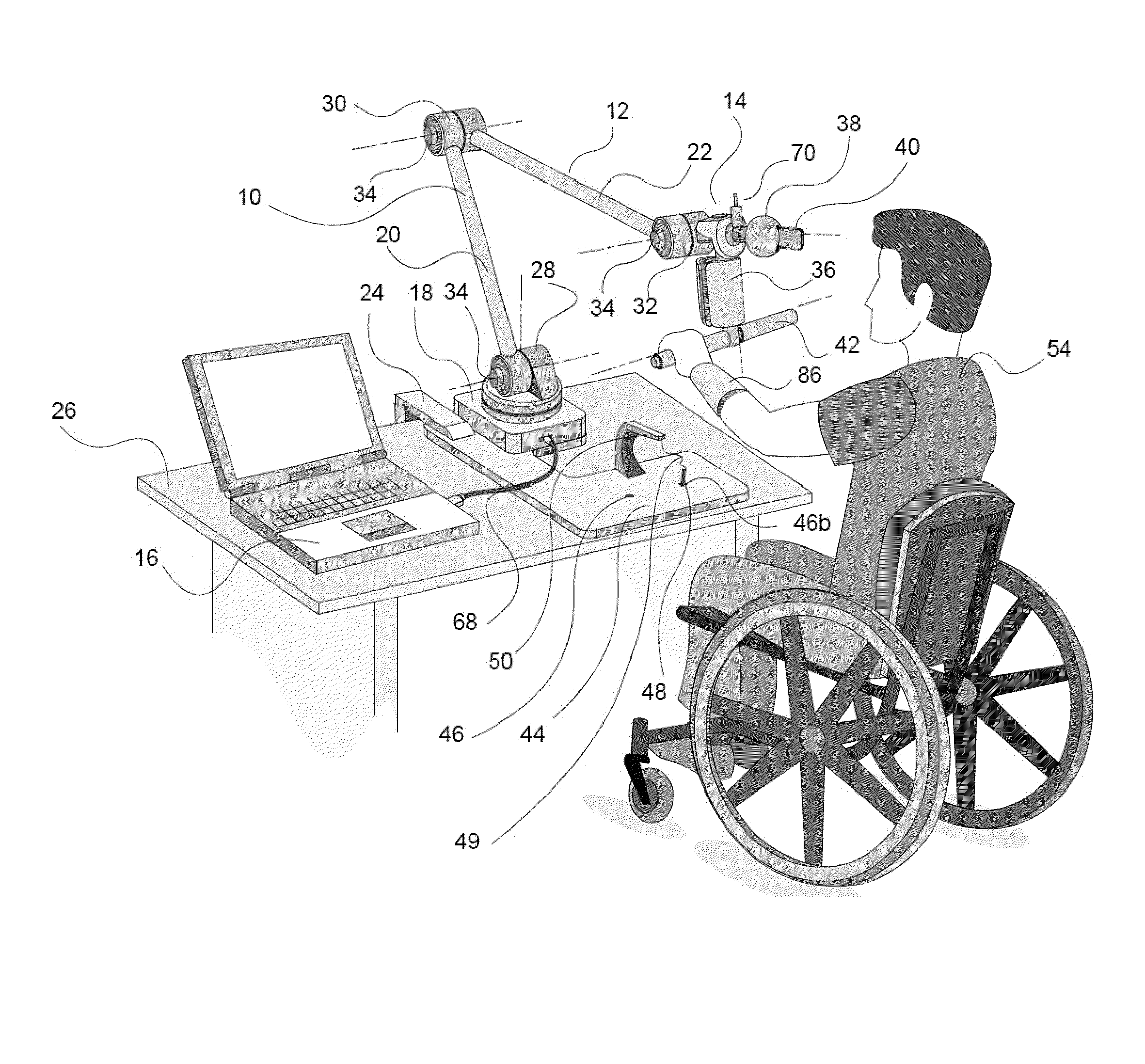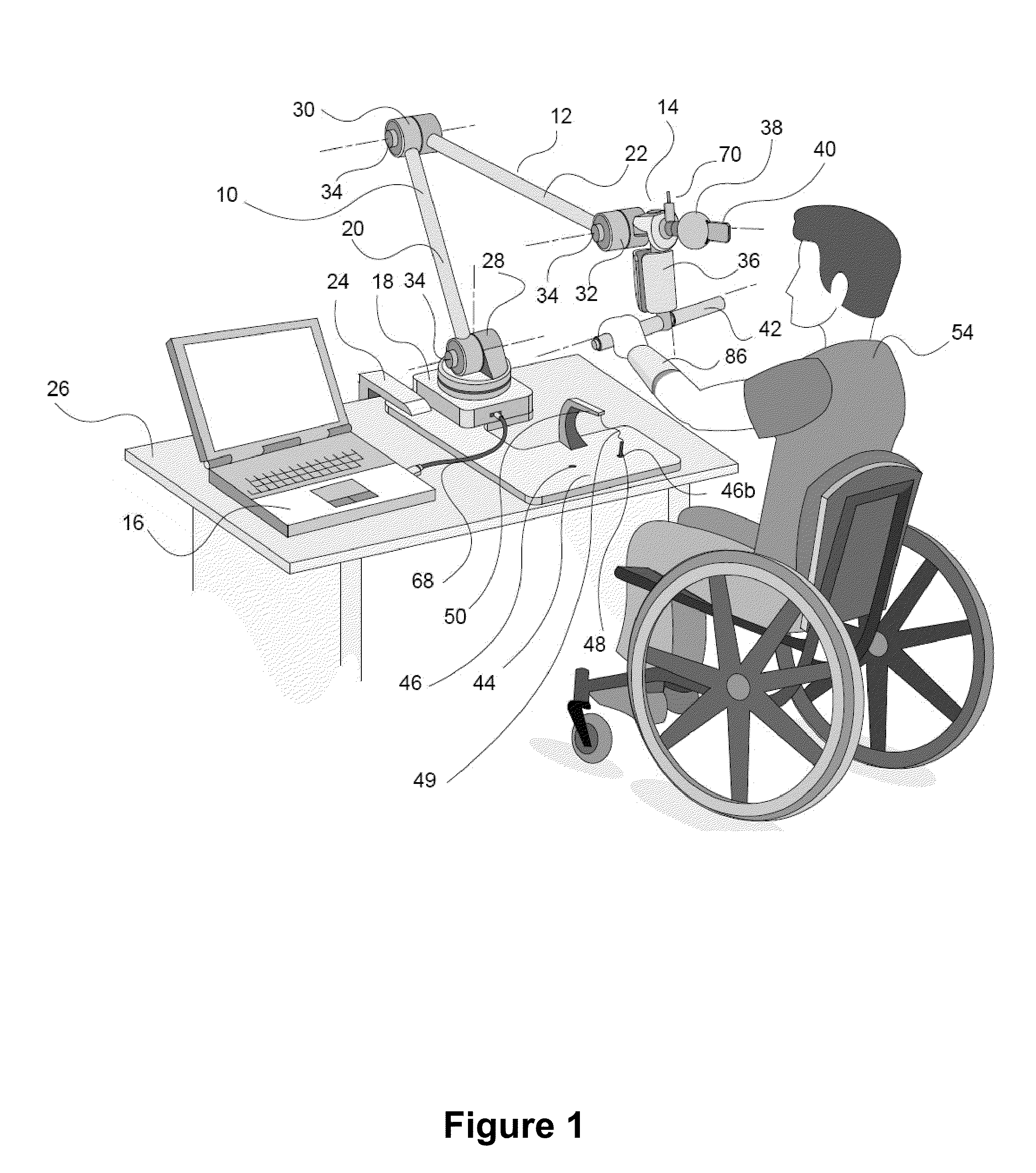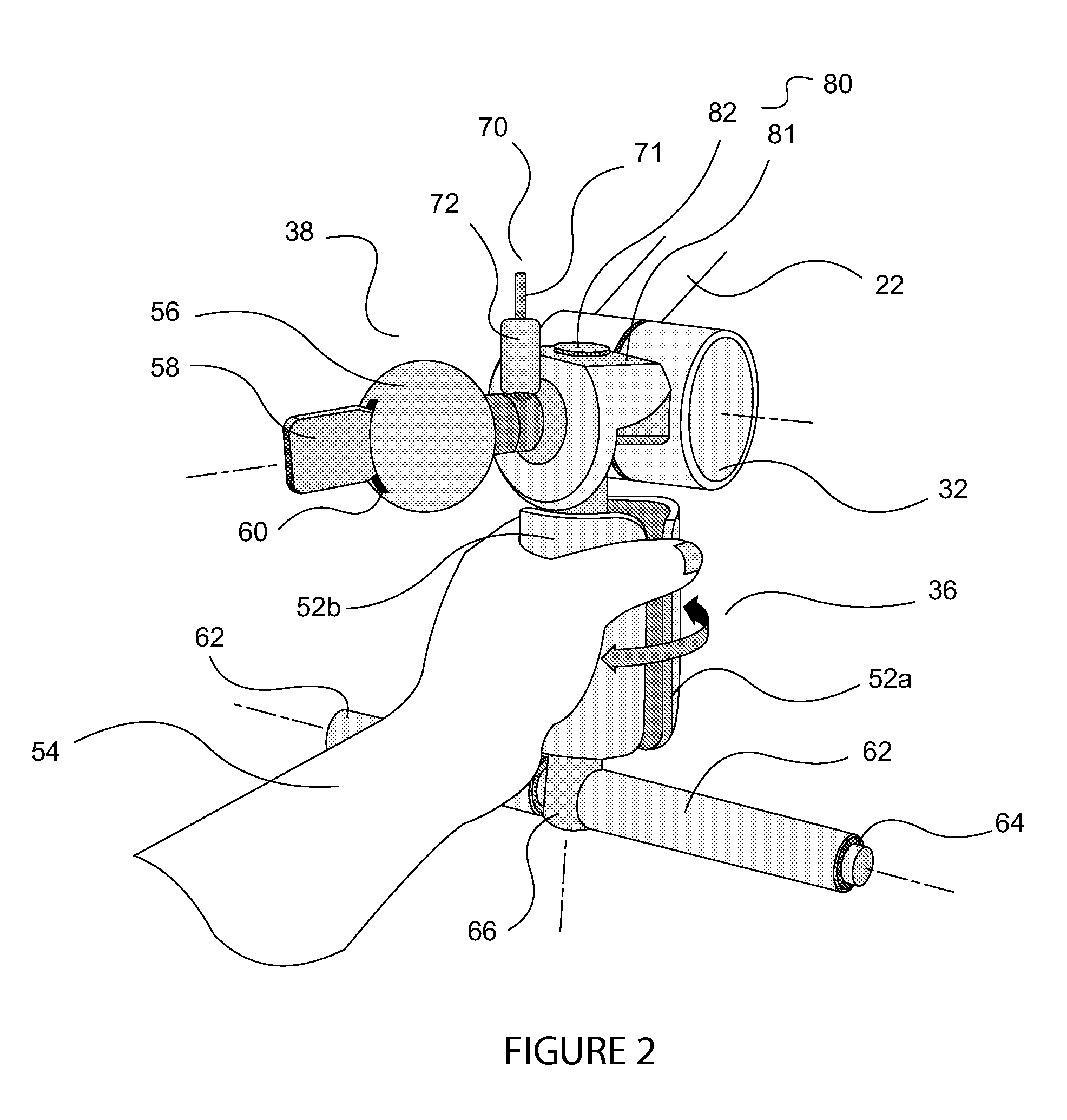Method and apparatus for automated delivery of therapeutic exercises of the upper extremity
a technology for upper extremity and therapeutic exercises, applied in the field of rehabilitation, can solve the problems of high care costs, loss of independence, and reduced quality of life, and achieve the effect of improving the function of the upper extremity
- Summary
- Abstract
- Description
- Claims
- Application Information
AI Technical Summary
Benefits of technology
Problems solved by technology
Method used
Image
Examples
Embodiment Construction
[0038]The invention broadly provides a method and apparatus for physical therapy for various disorders in which movement of the upper extremity is impaired. The apparatus has a multi-jointed, self-supporting arm, the joints of which provide resistance (preferably passive resistance) to rotational movement in one or more degrees of freedom. One end of the arm, a connected end, is connected to a support for securely supporting the arm and for positioning the arm at an appropriate user height. The other end of the arm, the free end bears one or more manipulanda simulating movements representative of activities of the user's daily life. The design of the arm allows movement to any point within the biomechanical workspace of the user's hand. Each manipulandum in the assembly is designed to provide a specific hand and / or arm exercise involving certain movements representative of those occurring in an activity of daily life. The specific exercise provided by each manipulandum is similar to...
PUM
 Login to View More
Login to View More Abstract
Description
Claims
Application Information
 Login to View More
Login to View More - R&D
- Intellectual Property
- Life Sciences
- Materials
- Tech Scout
- Unparalleled Data Quality
- Higher Quality Content
- 60% Fewer Hallucinations
Browse by: Latest US Patents, China's latest patents, Technical Efficacy Thesaurus, Application Domain, Technology Topic, Popular Technical Reports.
© 2025 PatSnap. All rights reserved.Legal|Privacy policy|Modern Slavery Act Transparency Statement|Sitemap|About US| Contact US: help@patsnap.com



